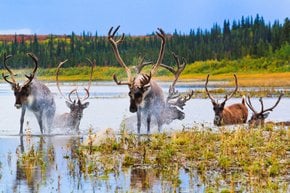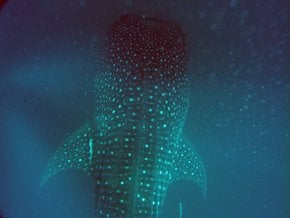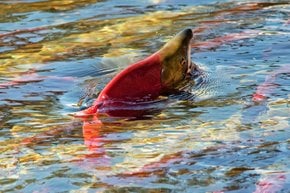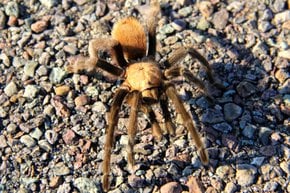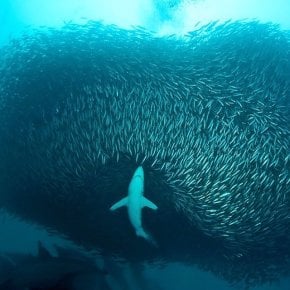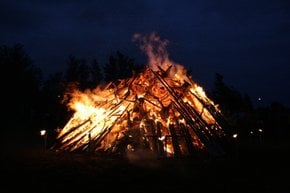Birdwatching during Mass Bird Migration in Estonia 2026
Thousands of birds come to Estonia's meadows, bogs, and islands in mid-May
Best time: March–June | September–October
With its extensive bogs, thousands of kilometers of coastline, over 2,000 islands, and half of its land area covered in forests, Estonia offers an attractive habitat for birds. The country is situated at the crossroads of a major migratory flyway, serving as a crucial stopover between breeding and wintering areas for millions of Arctic waterbirds. The Estonian islands, in particular, provide ideal feeding stopover sites, making it an excellent location to observe spectacular bird migrations.
When to see bird migration in Estonia?
Spring Migration
The spring migration in Matsalu National Park begins in March, peaks in May, and tapers off by mid-June, with mid-May being the best time for bird-watching due to the greatest diversity of species. However, visiting protected areas from April 15 to July 15 requires a special permit. The largest waterfowl migrations occur in March and April and again in September and October. Spring is also the best time to spot forest birds like woodpeckers and owls.
Autumn Migration
The autumn migration during September and October is more modest compared to spring but still offers excellent bird-watching opportunities. This period allows you to observe migratory birds gathering, forming flocks, and setting off. The massive arctic waterfowl migration takes place from September to October, providing a chance to see rare birds such as the White-billed Diver and the Grey Phalarope. Additionally, species like Brambling flocks, Goldcrests, Long-tailed and Willow Tits, Red-throated Diver, Greater Scaup, Bent Geese, and Velvet Scoter pass through Estonia during the first week of September.
The best locations for birdwatching in Estonia
Matsalu National Park
Matsalu National Park is arguably the best birdwatching spot in Estonia, featuring the largest coastal wetland in the country. This diverse habitat includes coastal, alluvial, and wooded meadows, reed beds, and islets. More than two million waterfowl pass through here in the spring, making it an excellent place to see Barnacle Geese and thousands of wading birds. The park has four observation towers worth visiting: Puise Nina Farm Birdwatching Tower, Haeska Birdwatching Tower, Kloostri Observation Tower, and Keemu Lookout Tower. From April 15 to September 30, the visiting hours are from 9 am to 5 pm on weekdays and 10 am to 6 pm on weekends. Activities in the park include canoe and kayak trips, Penijõe River hiking trails, boat rides, and educational nature programs.
Pärnu to Kabli, Luitemaa
South of Pärnu lies the Luitemaa Nature Reserve, a Ramsar site renowned for its biodiversity. This wetland hosts over 250 plant species and attracts 64,500 birds annually, including threatened species like the lesser white-fronted goose, the great snipe, and the horned grebe. A 1.5 km hiking trail winds through dune pine forests and bogs stunning views from the Tornimäe watchtower. Near the Latvian border, the Kabli bird station is ideal for bird ringing, with Goldcrests, Tits, and even Owls frequently caught for study as many birds migrate along the coast.
Puhtulaid and Virtsu
Before reaching Saaremaa, you can stop at several interesting locations, including Puhtulaid and Virtsu. The coastal areas around Virtsu and Puhtulaid feature numerous small bays and relict lakes, providing excellent nesting opportunities for water birds. Migrating waterbirds in Estonia include Long-Tailed Ducks, Scoters, Loons, Black Geese, Geese, Ducks, Canvasbacks, Mergansers, and other waterfowl. Rare sightings, such as the King Eider, and frequent appearances of the Parasitic Jaeger add to the appeal of these spots.
Saaremaa
The Sõrve Peninsula, extending from the southwest corner of Saaremaa towards Latvia, is a premier birdwatching spot in Estonia. During migration periods, the coastline directs waterbird migration, and many raptors and passerines cross the sea here. It's an excellent location for observing skuas, waders, diving ducks, and rare birds such as sparrowhawks, buzzards, harriers, falcons, and eagles. The old military fortification offers a vantage point to see hundreds of thousands of chaffinches, bramblings, and siskins. In autumn, about 1.5 million migrating birds are counted, including chaffinches, siskins, goldfinches, and other passerines. Activities in Saaremaa include visiting the Sõrve Lighthouse, exploring the Loode Oak Forest Nature and Study Trail, and birdwatching at Vilsandi National Park, another popular hotspot for bird enthusiasts.
Cape Põõsaspea
Cape Põõsaspea, the north-westernmost tip of mainland Estonia, is a premier birdwatching destination. The rocky ridge extends far into the sea, offering an exceptional vantage point for observing arctic waterfowl migration. This area is renowned for spotting diverse species such as Loons, Scoters, Diving Ducks, Long-tailed Ducks, Mergansers, and various Geese. It is also a prime location for viewing the rare Yellow-billed Loon and Great Northern Loon. The migration route crosses directly over the Cape, with birds gathering in impressive numbers in the 7-km bottleneck between Cape Põõsaspea and Osmussaar Island. Observation towers, such as the Orjaku birdwatching tower on Hiiumaa, offer excellent vantage points for birdwatching.
What bird species to expect in Estonia?
During a week in Estonia, birdwatchers might see between 180 and 190 species, with the chance to spot over 200. Notable species include the Arctic Redpoll, Black Stork, Blyth’s Reed Warbler, Booted Warbler, Citrine Wagtail, Common Rosefinch, Eagle Owl, Golden Eagle, Goshawk, Lesser Spotted Eagle, Nutcracker, Red-breasted Flycatcher, Steller’s Eider, and White-tailed Eagle.
Birdwatching Trips
Various tours are available during both the spring and autumn migrations, typically lasting between 5 and 8 days. These tours include the services of a naturalist leader and visit multiple locations and peninsulas, including Matsalu National Park. Prices for guided tours start at approximately €1000. Additionally, self-guided tours with a free map are also offered.




















